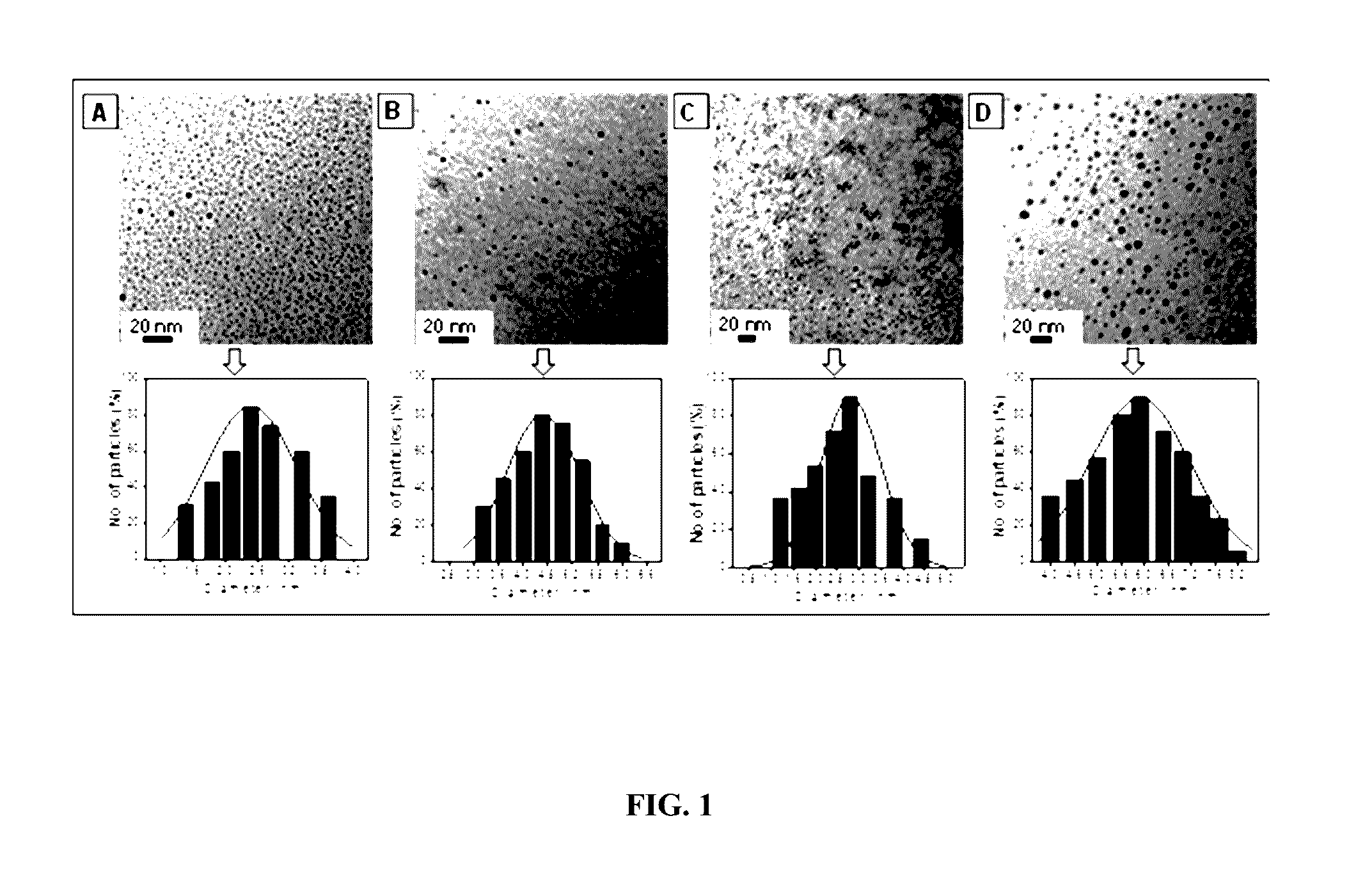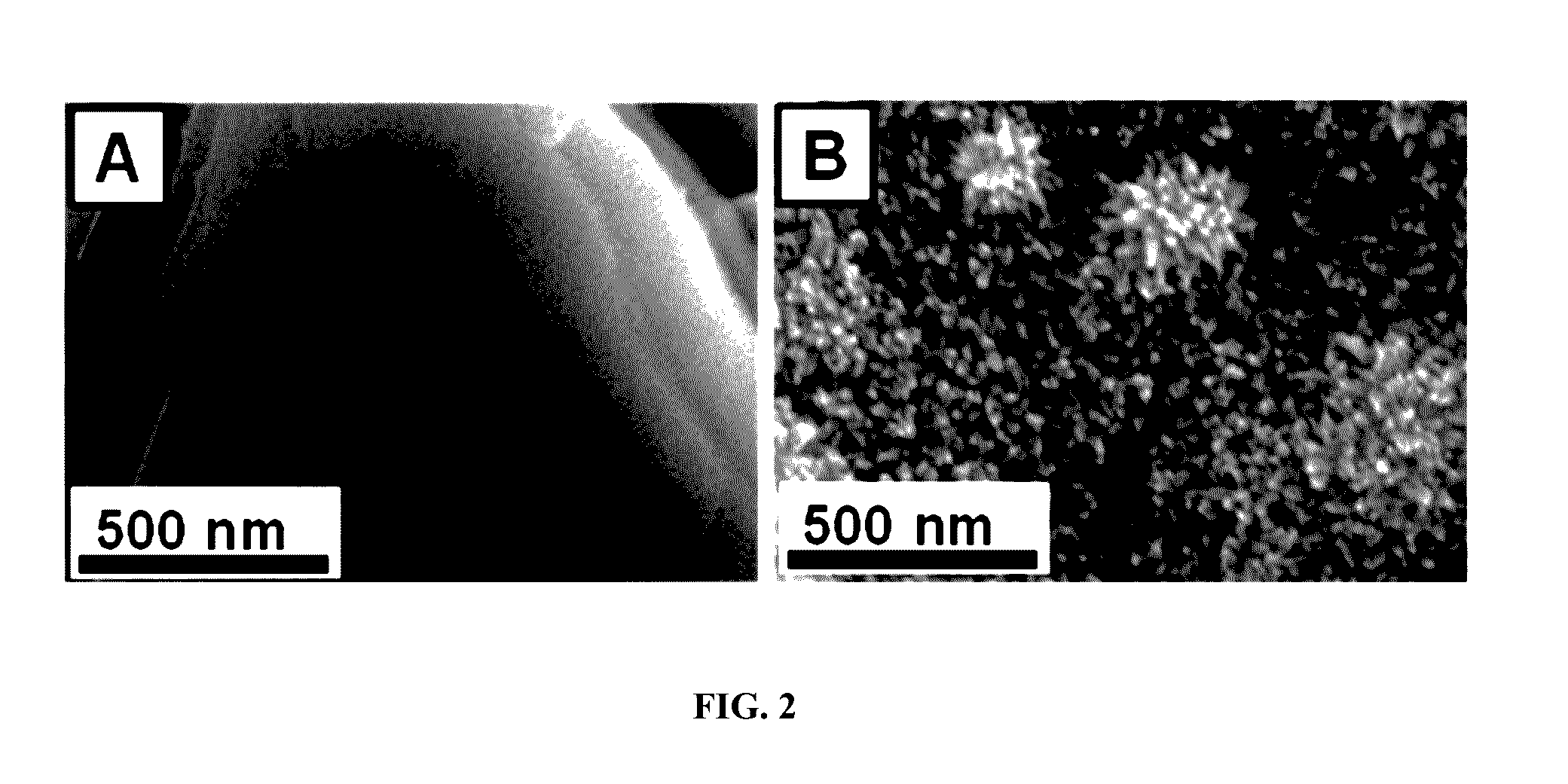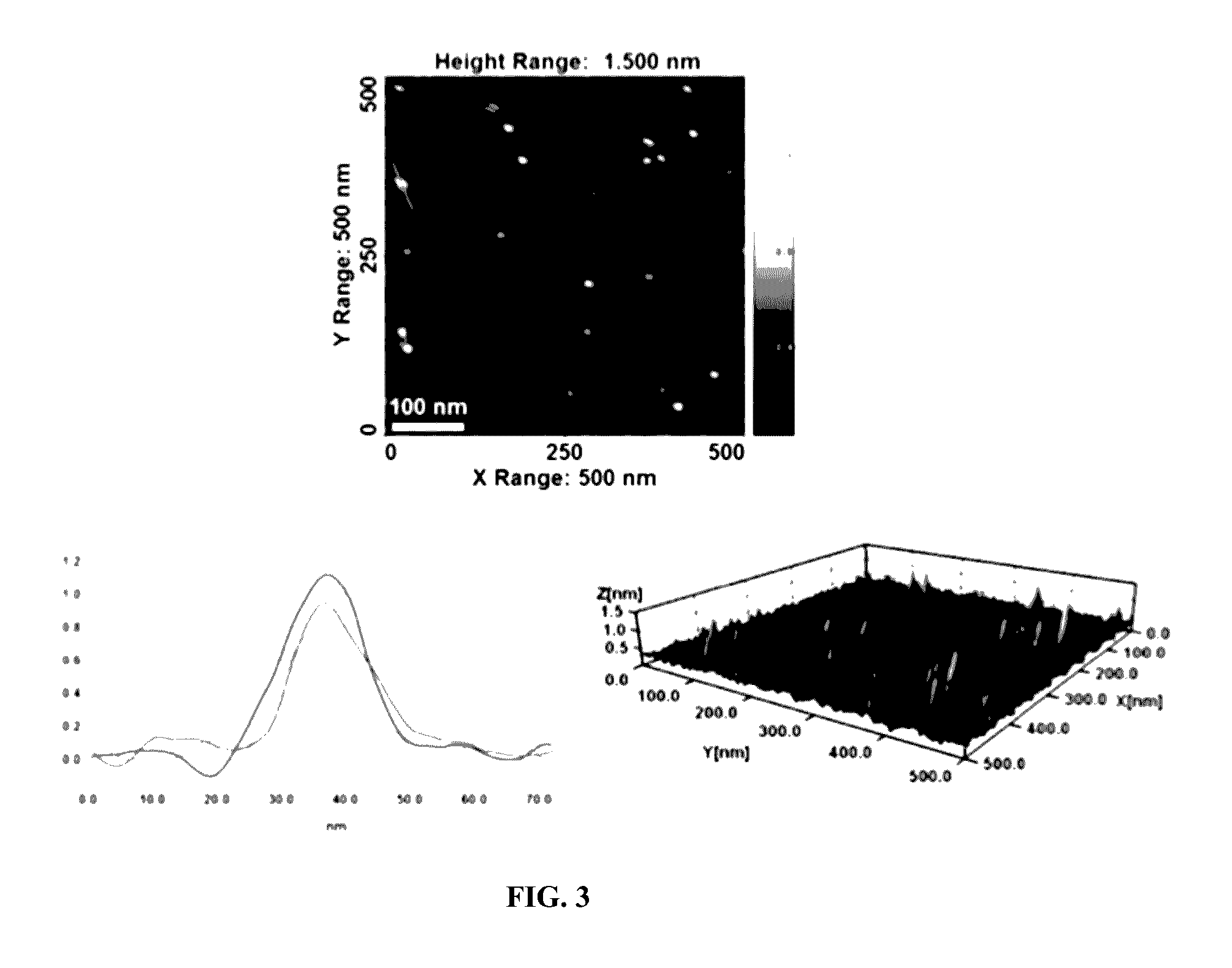Method for the synthesis of layered luminescent transition metal dichalcogenide quantum dots
a luminescent transition metal and quantum dots technology, applied in the field of synthesis of layered luminescent transition metal dichalcogenide quantum dots, can solve the problems of inability to use graphene in optical/electronic applications, inability to synthesis and characterization of mossub>2 /sub>nanoclusters, and infancy of methods, etc., to achieve fast growth of mos2, cost-effective and eco-friendly, and simple and cost-effectiv
- Summary
- Abstract
- Description
- Claims
- Application Information
AI Technical Summary
Benefits of technology
Problems solved by technology
Method used
Image
Examples
example 1
Electrochemical Exfoliation of MoS2 and MoSe2 and Preparation Method of the Luminescent Molybdenum Disulphide (MoS2) and Molybdenum Diselenide (MoSe2) Quantum Dots
[0042]Molybdenum disulfide (MoS2) and molybdenum diselenide (MoSe2) flakes, Ionic Liquids commercially available as LiTFSI salt, [BMIm]Cl from Sigma Aldrich, were used as received without any further purification. In a typical example, the electrolyte for the electrochemical exfoliation was prepared by mixing LiTFSI with de-ionized water (0.1 wt. % and 1 wt. %).
[0043]Pelletized MoS2 / MoSe2 discs made from commercially available flakes, were placed in an electrochemical cell with 1 cm apart in aq. LiTFSI or [BMIm]Cl of the following concentrations: 0.1, 1 and 5 wt. %. A constant potential of 5V was applied to between the electrodes for 3 hours, at 25° C. This solution was centrifuged for 1 h at 6000 rpm. The supernatant solution was collected and analyzed further. The method can be carried out using several other RTILs such ...
example 2
Direct Deposition of Molybdenum Diselenide (MoSe2) Quantum Dots onto Conducting Substrates
[0044]In yet another aspect of the present invention, electrochemical exfoliation method was employed for synthesizing MoSe2 nanocrystals, starting from their bulk, by using 0.1 wt % aq. LiTFSI electrolyte under a constant applied DC potential of 5 V. In a typical synthesis, 500 mg of MoSe2 powder was pelletized by applying a pressure of 5 tons / cm2. This pellet was employed as anode and conducting substrates of choice viz. gold, FTO or similar material can be used as cathode for the electrochemical exfoliation. The electrodes were placed in an electrochemical cell 1 cm apart, in 0.1 wt. % aq. LiTFSI electrolyte. The exfoliated electrolyte solution contains a mixture of several exfoliation / oxidation / decomposition products whose composition is much complex to elucidate. However, a drift of the exfoliation products towards the negative electrode was observed as the exfoliation proceeded and a unif...
example 3
Electrochemical Preparation of Quantum Dots of WS2 / WSe2 and Direct Deposition on Conducting Substrates for Energy Applications
[0045]Following similar protocols described in Example 1-3, quantum dots of WS2 / WSe2 is also synthesized and was directly deposited onto transparent conducting substrates / gold foil for energy harvesting or conversion applications. WS2 quantum dots are particularly interesting for electrocatalytic hydrogen evolution because of the favorable thermoneutral chemistry of metal / chalcogenide edges.
Electrochemical HER Measurements of MoS2 Quantum Dots
[0046]Electrochemical HER measurements were carried out using three-electrode cell with 0.5 M H2SO4 as electrolyte. As synthesized MoS2 quantum dots with 5 wt. % nafion solution was drop-casted onto glassy carbon electrode and dried at room temperature, which acts as working electrode. Pt wire auxiliary electrode and Ag / AgCl were used as counter and reference electrodes respectively. The performance of the catalyst towar...
PUM
| Property | Measurement | Unit |
|---|---|---|
| diameter | aaaaa | aaaaa |
| electric potential | aaaaa | aaaaa |
| particle size | aaaaa | aaaaa |
Abstract
Description
Claims
Application Information
 Login to View More
Login to View More - R&D
- Intellectual Property
- Life Sciences
- Materials
- Tech Scout
- Unparalleled Data Quality
- Higher Quality Content
- 60% Fewer Hallucinations
Browse by: Latest US Patents, China's latest patents, Technical Efficacy Thesaurus, Application Domain, Technology Topic, Popular Technical Reports.
© 2025 PatSnap. All rights reserved.Legal|Privacy policy|Modern Slavery Act Transparency Statement|Sitemap|About US| Contact US: help@patsnap.com



